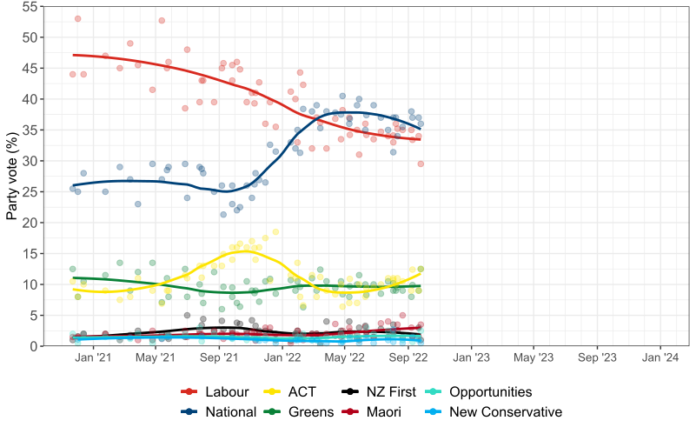The local election results do not point to any major shift in voting, but may demonstrate an underlying voter desire for solutions based candidates. Moreover, trend analysis of the results shows growing dissatisfaction with the power larger parties wield over local government.
Overall trend analysis reveals a potential slow drift away from the polarising influence of the two large opposing parties.
There are currently 12 minor parties registered in New Zealand. Of these twelve parties, only three are currently seated in the Chamber of the House of Representatives.
This is a manifestation of the long running hegemony established under major parties (both Labour and National), and may be a reflection of the lack of diversity in NZ that is required in an effectual democracy adequately representing its population.
Many of the minor parties have principal goals that may substantively improve New Zealand economic and social divides. Moreover, when reviewing each of the minor party constitutions, there are overt correlations between gaps in current government strategies and potential new ideas that could develope directly from these minor parties.
MINOR PARTIES VOTE SUBSTANTIALLY MORE OFTEN WITHIN THEIR STATED PARTY RULES
Cursory analysis over the past few years of governance also demonstrates that Minor parties vote substantially more often within their stated party rules and constitution.
The twelve registered minor parties include:
ACT New Zealand
Aotearoa Legalise Cannabis Party
Heartland New Zealand Party
Māori Party
New Conservative
New Zealand First Party
NZ Outdoors & Freedom Party
ONE Party
The Greens
The New Zealand Democratic Party for Social Credit
The Opportunities Party (TOP)
Vision New Zealand
Only ACT New Zealand, Māori Party, and The Greens have current representation.
Were all of the minor parties able to reach a minimum 5% threshold required for party seating, this would make up in excess of 60% of the total election votes.
Even if a handful of additional minor parties were to reach this threshold, the result could substantially change the one party ruling paradigm and result in a more diversified representation of the electorate within the House of Representatives.
Furthermore, subsequent to review of each minor party constitution, overt correlations were identified that indicate several parties working cooperatively can form a conglomeration to reach 5%.
In each of the above potential scenarios, the minor parties would have broad impact on the overall New Zealand political landscape, beyond the minor representation each individual party could hold.
An additional benefit to expanding representation of these minor parties is seen in potential improvements in the balance of power, often wielded and tightly controlled by the major parties to form their government. This could potentially have wide-reaching benefits for the efficacy of new bills and mandates drafted into law.



